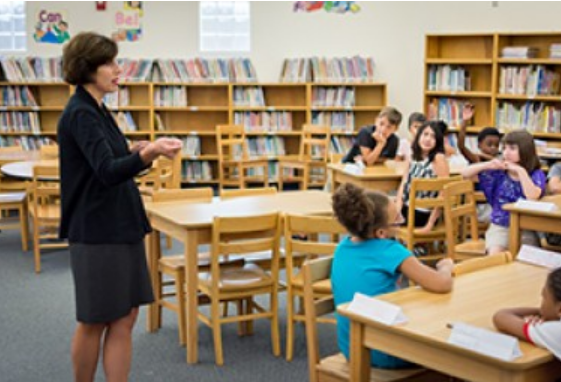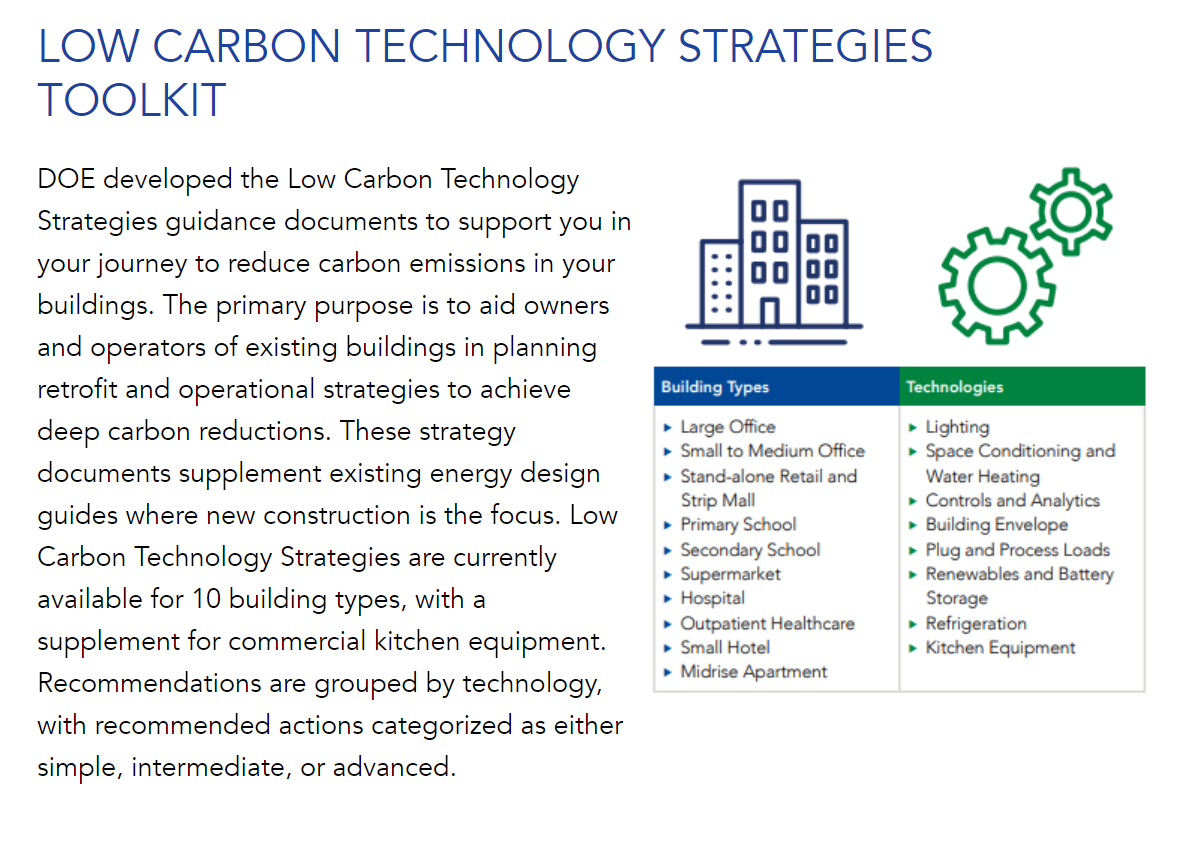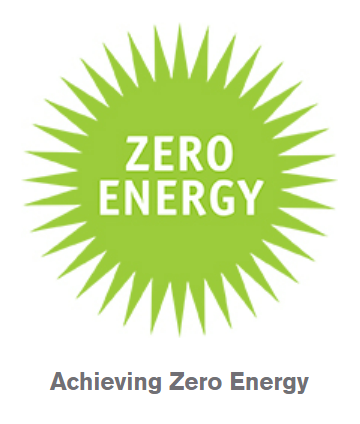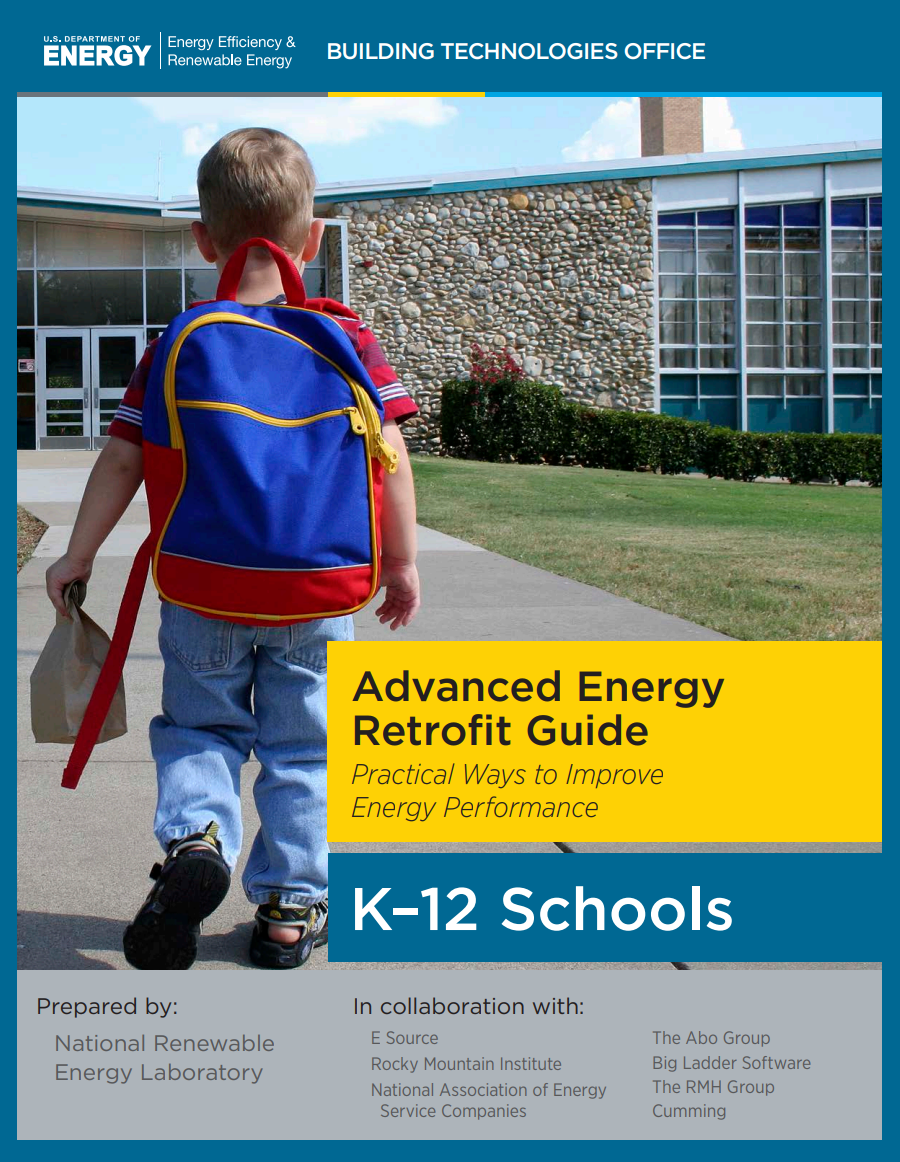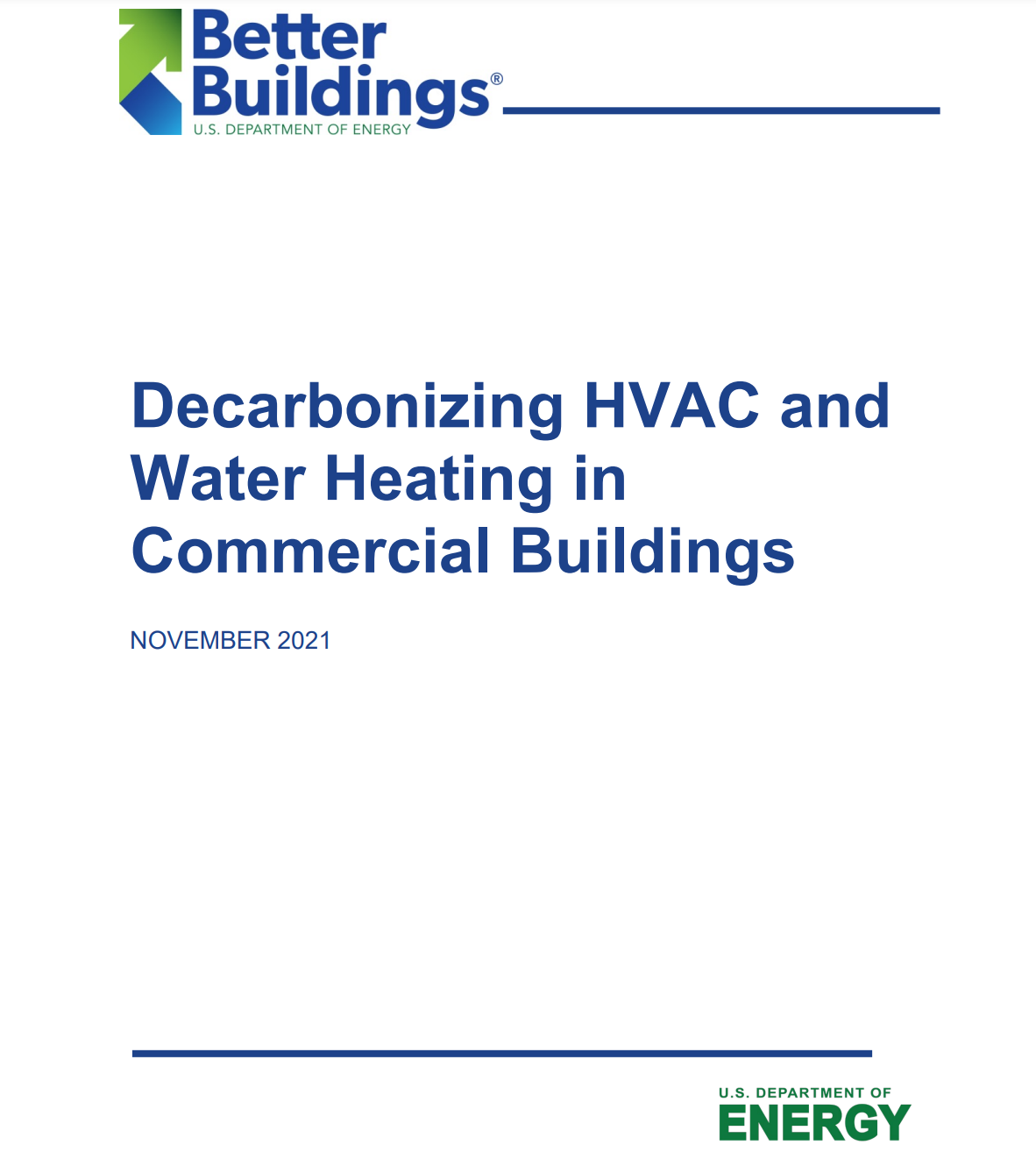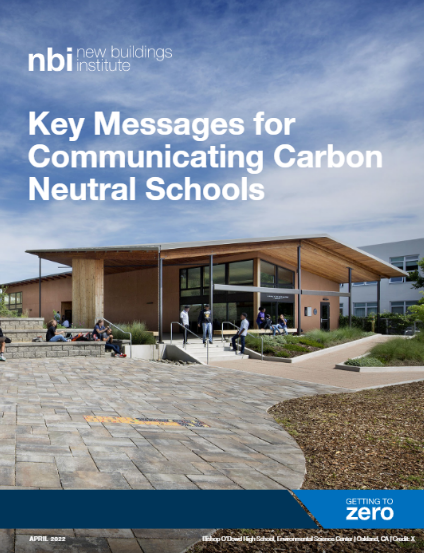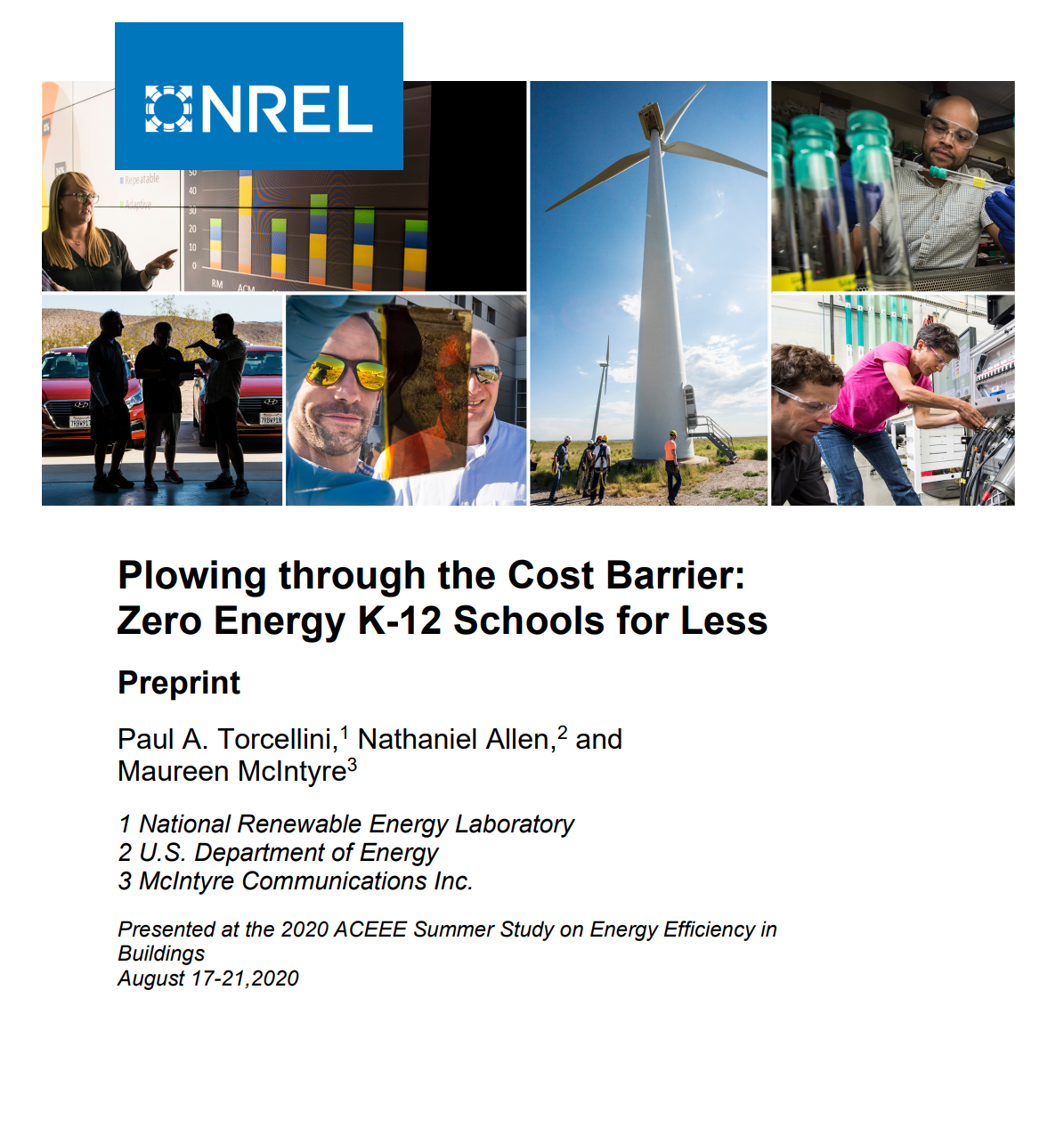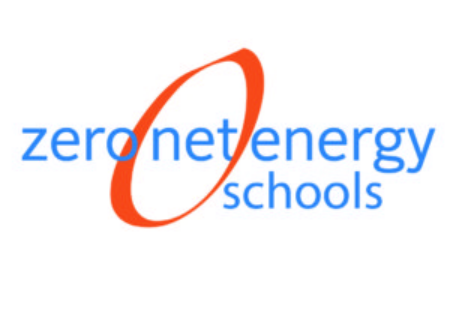Error message
There was a problem getting your available contact lists.Decarbonization
Resources from the Zero Energy Schools Accelerator, which had a goal to make zero energy K-12 schools mainstream while enhancing the educational environment. The website provides resources, solutions, and technologies to help schools achieve zero energy goals.
DOE developed the Low Carbon Technology Strategies guidance documents to support you in your journey to reduce carbon emissions in your buildings. The primary purpose is to aid owners and operators of existing buildings in planning retrofit and operational strategies to achieve deep carbon reductions. These strategy documents supplement existing energy design guides where new construction is the focus. Low Carbon Technology Strategies are currently available for 10 building types, including schools.
This Guide offers contractors and designers the tools needed for achieving energy efficient schools, including recommendations for practical products and off-the-shelf technology. This Guide was developed through the collaboration of ASHRAE, the American Institute of Architects (AIA), the Illuminating Engineering Society (IES), and the U.S. Green Building Council (USGBC), with support from the Department of Energy (DOE), to help meet all of an owner's energy performance requirements.
This Guide provides practical ways to improve energy efficiency, from existing building commissioning to whole-building retrofit. It includes general project planning guidance, as well as more detailed descriptions for many energy efficiency measures. The Guide also provides energy and cost savings estimates based on simulations for five climate zones to illustrate the financial payback of energy efficiency measures.
This resource can be used as a starting point when conducting the technical, economic, and feasibility assessment for converting to all-electric heating solutions. The attractiveness of facility electrification will vary substantially by region, climate, utility rates, existing systems, and other factors.
New Buildings Institute (NBI) provides materials to help schools plan a successful process to build consensus, formalize the project vision, and guide the design to achieve energy efficiency and sustainability goals. The toolkit includes templates and checklists that schools can use as reference materials.
New Buildings Institute (NBI) document to help schools practice effective communication in order to engage stakeholders in designing, constructing, and operating zero energy buildings. It identifies key stakeholders and drivers that motivate decision making to support successful outcomes.
There is a perception that zero energy K–12 schools cost more than conventional schools. Zero energy schools provide a number of unique benefits to school districts, students and staff, and communities. Among other things, a zero energy school requires far less energy to operate than a conventional school and uses on-site renewable energy systems to offset that reduced energy load. The money saved on energy can often be used to enhance educational programs. But does the extra value come at a premium? Research findings indicate that not only can zero energy schools be designed and built on conventional school budgets, they can cost less.
ZE buildings are described differently—zero energy, net zero energy, zero net energy—in different regions (DOE 2015). If the output from the renewable energy system exceeds the energy needs, the building is said to be energy positive. In some situations, school owners opt to delay the installation of the renewable energy system because of financial or other constraints. These schools, dubbed “zero energy ready (ZER),” offer many of the benefits of ZE schools, including reduced utility bills. Regardless of the label, every ZE building starts with optimizing energy efficiency.
This report details modeled energy performance and savings from retrofit packages in prototype school buildings in climate zones throughout the U.S. The information herein serves as a reference for elementary and secondary schools interested in implementing retrofit packages in their facilities for energy savings as well as health and safety benefits. Results include electric and gas savings from nine different retrofit packages that combine energy conservation measures including HVAC controls and equipment upgrades, lighting efficiency upgrades, and electrification technologies such as heat pumps for space conditioning and domestic hot water. CO2 emissions reductions and annual energy cost savings are also estimated.
Renewable energy, such as photovoltaic (PV) panels, may be installed in a new construction project or during a retrofit to offset a school’s base energy use and resulting environmental footprint. Financing for renewable energy is available, commonly through a power purchase agreement (PPA), an agreement to purchase power from a solar or wind power provider or a utility at a certain cost over a defined timeframe.
Paul Torcellini from National Renewable Energy Laboratory discussed resources for decarbonization of existing schools, including tools and guides from DOE’s Better Buildings Initiative, best practices, and practical examples from school districts. Additionally, Jess Farber and Kiersten Washle from CMTA shared an example of a successful school retrofit project that is directly applicable to existing schools.
The webinar on June 15, 2022 featured two awardees from the campaign’s recognition program: Boulder Valley School District, CO and Charleston County School District, SC.
Presenters also included campaign staff and technical experts, who shared best practices for engaging the school community in strategic planning and investments for efficient and healthy schools. New Buildings Institute shared highlights from their recently released Decarbonization Roadmap Guide for School Building Decision Makers. Discussion topics included collaborative approaches to involve the school community in setting quantitative energy goals and innovative methods to communicate building performance improvements.
New Buildings Institute offers webinars and workshops on how existing K-12 school and community college buildings in California achieved zero net energy performance. Slides and recordings are from 2018.
This is a seminar series on how to achieve the zero target through practical approaches including HVAC design. Talks include successful zero energy case studies, as presented at the 2018 ASHRAE Winter Conference.
